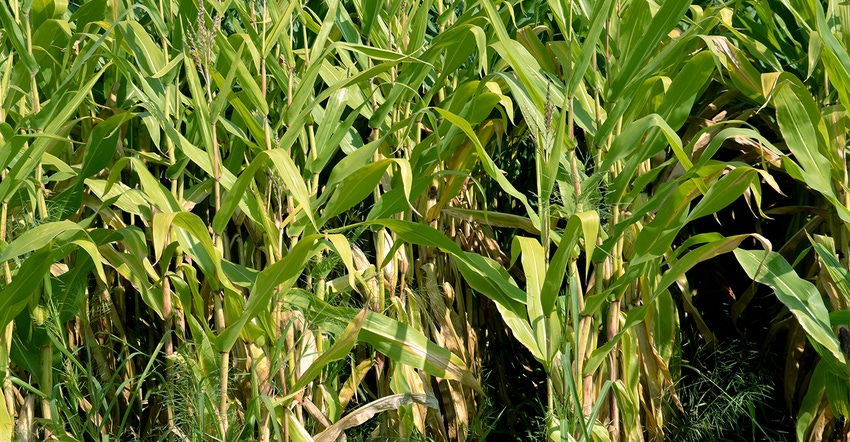
There is one exception to Jim Camberato’s observations about seeing dramatic responses to nitrogen when corn was deficient in N but otherwise healthy. This exception is leading Camberato, Purdue University Extension soils fertility specialist, and Bob Nielsen, Purdue Extension corn specialist, to look closer at sulfur levels.
In 2017, when in northern Indiana, Nielsen checked the health of corn plants that stood in water for several days in an on-farm field trial. He assured Camberato that the roots were still healthy after the soils drained, and a late-season nitrogen rescue application should produce a big yield increase.
“We didn’t see the yield increase like we had in other fields,” Camberato observes. He wondered whether the plants were as healthy as Nielsen thought.
Sulfur connection
More recent evidence indicates that Nielsen may have been right all along, Camberato acknowledges. The plants could have been healthy, but the soils may have been deficient in sulfur. That could have interfered with nitrogen uptake and usage even when nitrogen was applied.
Shaun Casteel, Purdue Extension soybean specialist, working on similar soils where Camberato and Nielsen saw these results, has found surprising increases in soybean yield when sulfur was added. Casteel, Camberato and Nielsen are all taking a closer look at what may be going on with these soils.
“Twenty years ago, there was typically 30 pounds of sulfur per acre in the atmosphere annually,” Camberato explains. “Corn removes about 10 to 15 pounds of sulfur per acre in grain each year. Today, only about 5 pounds per acre of sulfur is available from the air each year.
“On soils with 2% organic matter or less, we may be seeing sulfur deficiencies in some cases. It’s worth further study,” he notes.
About the Author(s)
You May Also Like




